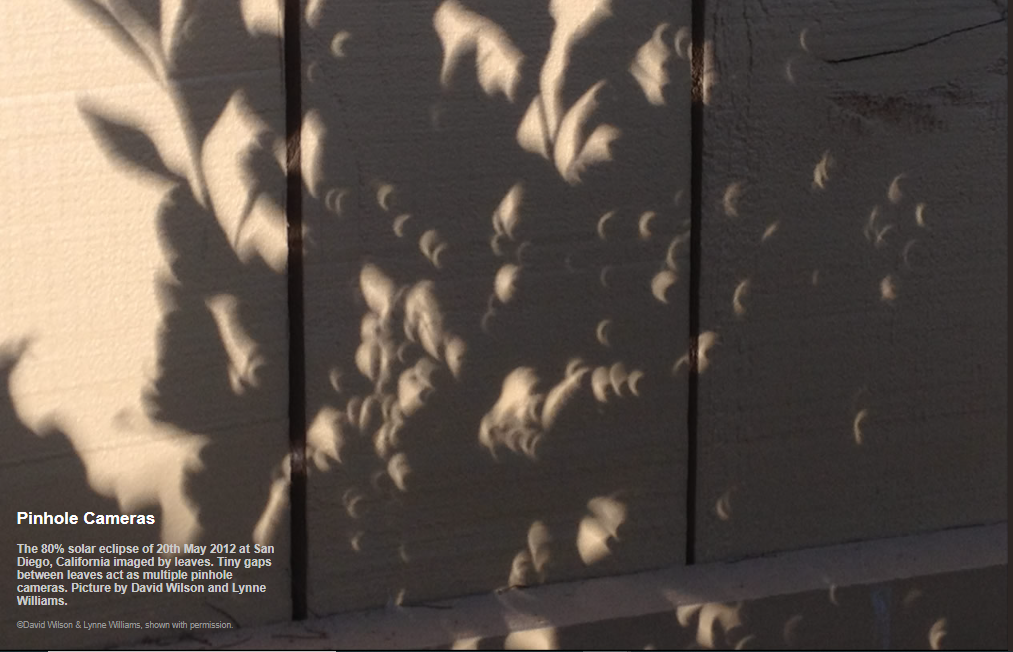OPOD - Leafy Pinhole Cameras
OPOD - Leafy Pinhole Cameras: Capturing Nature's Photographic Wonder
Have you ever marveled at the intricate beauty of an eclipse, where the sun's rays create a mesmerizing dance of light and shadow? Surprisingly, you don't need high-tech equipment to capture these celestial spectacles. In fact, nature itself can provide a unique way to view solar events: through leafy pinhole cameras. This article delves into the fascinating world of pinhole cameras formed by tiny gaps between leaves, revealing the hidden solar images that often go unnoticed.
When a solar eclipse occurs, the leaves on trees unwittingly become photographers, capturing inverted images of the celestial event. These natural pinhole cameras are created by the simple geometric projection of rays passing through small gaps between leaves. The result is a breathtaking display of nature's ingenuity, where the beauty of the eclipse is reflected in miniature form on the ground below.
For a clear and detailed image to form, the gaps or holes between leaves must be significantly smaller than the distance between them and the surface acting as the screen. As with any camera, the size of the hole plays a crucial role in the quality of the image. Smaller holes yield more intricate details, but at the expense of brightness. Consequently, the images produced by leafy pinhole cameras possess a delicate charm, with their intricate patterns and subdued luminosity.
One might wonder how these leafy pinhole cameras manage to go unnoticed during regular days. The answer lies in the phenomenon known as dappling. When sunlight filters through the foliage, it creates countless tiny suns on the ground, casting ever-changing patterns of light and shadow. Usually, these patterns pass unheeded, blending into the background of our everyday surroundings. However, during an eclipse, when the sun's brilliance is dimmed, these dappling effects become more pronounced and catch our attention.
The beauty of leafy pinhole cameras is not limited to solar eclipses alone. Even on regular days, the interplay of light and foliage can create captivating scenes. As sunlight filters through the leaves, it undergoes diffraction, bending around the edges of the gaps and casting intricate patterns on the ground. These patterns, reminiscent of delicate lacework, add a touch of enchantment to our natural surroundings. Taking a moment to appreciate these ephemeral displays can deepen our connection with the natural world.
Leafy pinhole cameras serve as a reminder of the wonders that can be found in unexpected places. They teach us to look beyond the obvious and appreciate the beauty that exists in the everyday. The next time you find yourself beneath a canopy of trees, take a moment to observe the dappling of sunlight on the ground. You may be surprised by the hidden photographic wonders that nature has to offer.
In conclusion, leafy pinhole cameras offer a unique and captivating way to view solar eclipses and appreciate the interplay of light and foliage. These natural optical devices demonstrate the elegance of simple geometric projection, transforming tiny gaps between leaves into miniature photographers. Whether during an eclipse or on an ordinary day, leafy pinhole cameras remind us to pause and marvel at the hidden beauty that surrounds us. So, next time you find yourself in nature's embrace, take a closer look at the intricate patterns dancing on the ground. You never know what photographic wonders you might discover.

Pinhole Cameras
The 80% solar eclipse of 20th May 2012 at San Diego, California imaged by leaves. Tiny gaps between leaves act as multiple pinhole cameras. Picture by David Wilson and Lynne Williams.
©David Wilson & Lynne Williams, shown with permission.

The inverted images are formed by simple geometric projection of rays through small gaps between leaves.
For a clear image the gaps or holes must be very small compared to the distance between them and the screen. The smaller the hole the more detailed is the image but the penalty is that it also gets fainter.
Solar images are nearly always there beneath trees but the dappling of the ground by tiny suns mostly passes unheeded except at eclipse time.
Note: this article has been automatically converted from the old site and may not appear as intended. You can find the original article here.
Reference Atmospheric Optics
If you use any of the definitions, information, or data presented on Atmospheric Optics, please copy the link or reference below to properly credit us as the reference source. Thank you!
-
<a href="https://atoptics.co.uk/blog/opod-leafy-pinhole-cameras/">OPOD - Leafy Pinhole Cameras</a>
-
"OPOD - Leafy Pinhole Cameras". Atmospheric Optics. Accessed on December 23, 2024. https://atoptics.co.uk/blog/opod-leafy-pinhole-cameras/.
-
"OPOD - Leafy Pinhole Cameras". Atmospheric Optics, https://atoptics.co.uk/blog/opod-leafy-pinhole-cameras/. Accessed 23 December, 2024
-
OPOD - Leafy Pinhole Cameras. Atmospheric Optics. Retrieved from https://atoptics.co.uk/blog/opod-leafy-pinhole-cameras/.